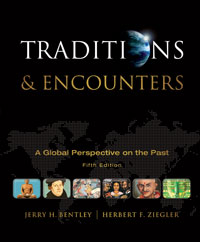1 Map A. American Revolution In the first phase of the war, where were the forts that the British used for their attacks? What geographical features did Britain take advantage of to press its attack?
2 What cities were key to both British and Colonial strategy? What features of climate and geography made these cities so important?
3 How did climate and geography impact the American and British war effort? What are some examples of hardships or opportunities imposed by these factors on both sides of the war?
4 How was the war in the South different from that in the rest of the colonies? How did geographic and human settlement patterns make it difficult for England to win the war in the South?
5 How did the entry of France into the war give a critical advantage to the colonists? What new path of transport and troop movement did the French intervention open up for the colonists? How did this entry weaken Britain's military position?
6 Map B. Dominion of Canada Compare the efforts of the United States and Latin America to create a multi-cultural society.
7 Explain the relationship between American economic development and Europe. How did Europe function in different American economies?
8 What environmental and geographic factors influenced these patterns of settlement?
9 Contrast the granting of independence to Canada with that of other colonies in the British Empire. How was Canada different?
10 Map C. Mexican War What troop movements and strategies suggest that the Mexican War was the result of a larger idea of the "manifest destiny" of the United States to control the area between the Atlantic and the Pacific oceans? Did some Americans disagree over whether any or some part of the Mexican territories should be part of the U.S.? Make a list of the various arguments for and against expansion into Mexico and explain the motivations for each position.
11 President Polk was elected on an explicitly expansionist platform, strongly supporting the annexation of Texas and settlement of the Oregon border dispute with England. What political gains did Polk hope to achieve with a war against Mexico? What did Polk's opponents charge was behind Polk's decision to go to war?
12 The Mexican War was largely favorable for the United States from the beginning. U.S. troops, however, had to overcome formidable geographic obstacles and climatic conditions. Describe the obstacles faced by the various campaigns. How did the commanders of the U.S. forces circumvent the obstacles and successfully subdue the Mexican government?
13 What effects did the Mexican war have on American geography, demography and politics? What did the territory gained in the war add to the United States? What new citizens did the U.S. gain as a result of the war? What cultural influences were added to the nation? What political problems might the war have caused? How would the new territory effect the balance of free and slave states?
14 Create a diary of a soldier involved in the Mexican War (on either side). Why did you enlist? What did you expect the war to be like? What events and experiences would define this war for you? What is your opinion of the results of the war?





